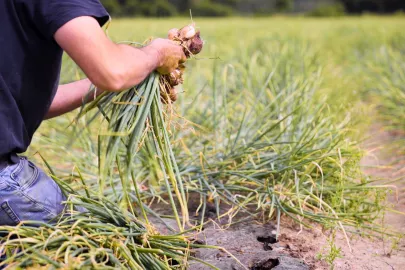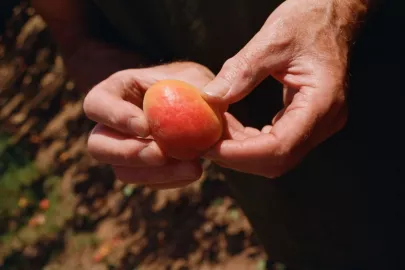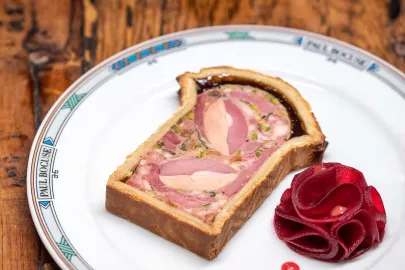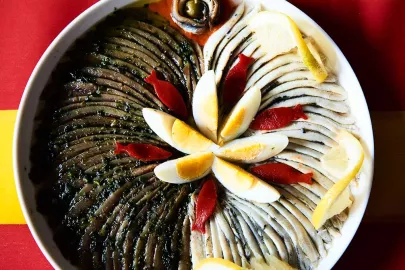Discover the art of Bayonne Ham through expert eyes
In the realm of culinary arts, there lies a tradition as enduring as the undulating landscape of the French countryside — the creation of Bayonne ham. This exquisite delicacy, deeply rooted in the annals of French history, found its earliest fan in King Louis XIV. It transcends mere cuisine, standing as a cultural emblem, a testament to a gastronomic legacy that has been cherished for centuries.
40 Years of Crafting Bayonne Ham
The Baillet factory, located in the small town of Hagetmau in France's Landes region, has been dedicated to perfecting Bayonne ham for over four decades. Their commitment to this craft has earned them numerous awards, a true testament to the quality of their products. Leading us through this journey was Frédéric Carrère, the site manager at Baillet. His expertise gave us an insider’s look at the meticulous process behind creating this culinary masterpiece.

Guaranteed quality within reach
Bayonne ham holds the prestigious Protected Geographical Indication (PGI) status, a mark of distinction that ensures its authentic origin. This certification guarantees that every ham is made in the Adour basin, nestled between the Pyrenees mountains and the Atlantic Ocean. But it’s more than just a label—it’s a solemn commitment to quality and authenticity. Each ham is crafted using time-honored methods passed down through generations, with Salies-de-Béarn salt, known for its rich mineral content and abundance in oligo-elements, playing a vital role in preserving and enhancing the ham’s flavour.

The Art of Salting : One of The Most Important Stages
The creation of Bayonne ham is an art form marked by precision and care, encompassing several crucial stages.
It starts with the careful selection of premium pork legs, sourced from 22 departments in Southwestern France. The quality of the meat, especially its fat content, is key, as the fat adds rich, nuanced flavours to the ham. These select cuts are then treated with the famed Salies-de-Béarn salt. Frédéric Carrère explains their unique salting technique:
'There are two distinct techniques. One involves total immersion of the ham in a salt vat. The other, our preferred method, is hand-salting. This allows us to gently massage the meat, ensuring the salt is evenly distributed without over-salting, while also removing any residual blood to tenderize the meat.'
This careful process lays the foundation for the ham's distinctive taste profile.

Mastering the process
After salting, the ham rests, allowing the flavours to fully penetrate. It’s then washed and dried before entering the crucial drying phase.
Finally, the ham matures in carefully controlled conditions until it achieves the perfect balance of flavour and texture. During this long maturation process, it is carefully coated with a mixture of rice flour and pork fat, a technique that allows the ham to develop its characteristic flavour. The Baillet establishments have mastered this process, performing rigorous quality checks at every stage.
“I check on the hams at least twice a day. Monitoring their scent is crucial as it changes throughout each stage of maturation, signaling the ham's proper aging. Daily, we observe, touch, and smell to ensure perfection."
Their commitment to quality is such that the maturation of their ham takes an average of 12 months, a testament to their philosophy that true flavour requires time.
The Bayonne Ham hallmark
Choosing the right Bayonne ham depends on personal taste, but each authentic ham carries a distinctive seal—the lauburu, or Basque cross, a symbol of its authenticity. Proper storage is key to maintaining its exceptional taste and texture.
A whole Bayonne ham can stay fresh for up to three months if stored in optimal conditions: a cool place with a consistent temperature of around 19°C, and wrapped in a cloth to maintain its integrity. For added preservation, especially on the cut edge, a light coating of olive oil followed by cling film can help keep the ham in peak condition, preserving its rich flavours and textures
Savouring Bayonne Ham
Bayonne ham can be enjoyed in many ways. On its own, its sweet and savoury flavours create a delightful experience for the palate. It’s often served as an appetizer with melon or figs, which complement its richness. Frédéric enthusiastically recommends Bayonne ham as an aperitif. 'A fine chiffonade on an appetizer board is sublime on its own and pairing it with local ewe’s milk cheese creates a delightful combination,' he says.
But there’s more! How about trying it in a maki roll with Bayonne ham, Camargue rice, and Parmesan cheese? And for those hot summer days, a salad of melon, Bayonne ham, and blue cheese is a must-try.
Frédéric also shares a cherished family recipe from his grandmother: thicker slices of ham, pan-fried and served with eggs cooked in the same fat, accompanied by piperade—a traditional Basque dish made with tomatoes, peppers, and onions. This dish perfectly captures the essence of local culinary tradition.
A Taste of History
The story of Bayonne ham is steeped in legend and local lore. One such tale recounts the fortunate mishap of a wild boar preserved by the salty waters of a spring, leading to the discovery of the method of curing which gives us Bayonne ham today. It’s a story that embodies the serendipity behind some of the French greatest gastronomic delights, a story told with pride and relished as much as the ham itself.
A Timeless French Experience
In today’s fast-paced world, where the new often overshadows the old, Bayonne ham stands as a reminder of the importance of tradition and the time it takes to do things right. It represents a legacy that is not merely about preserving food but about preserving a way of life, a slice of history, and a piece of cultural identity.
The next time you savour a slice of Bayonne ham, remember that it is more than a mere morsel of meat;
… It's a culinary journey that connects us to the past, to the skilled hands of artisans, to the fertile lands of the Adour basin, and to the shared history of a nation.
Bayonne Ham in Modern Gastronomy
Bayonne Ham, with its deep-rooted history and distinctive flavour, isn’t a simple relic of French culinary tradition. Today it’s making a splash in modern gastronomy where chefs and foodies are reimagining this classic ingredient in new and exciting ways.
A Star in Contemporary Cuisine
In fine dining restaurants worldwide, Bayonne ham has become a staple, loved for its rich and nuanced flavours. Renowned chefs are incorporating it into their menus in unexpected ways, creating dishes that honor the ham’s heritage while also taking culinary creativity to new levels.
Versatility in the Kitchen
Bayonne ham’s versatility is not limited to fine dining. It’s equally at home in more casual settings, where its rich flavour can elevate everyday dishes. From gourmet sandwiches and salads to pasta and pizzas, Bayonne ham adds a touch of elegance and sophistication.
Bayonne Ham in Fusion Cuisine
Bayonne ham is also making its mark in fusion cuisine, where it’s paired with ingredients from different culinary traditions to create exciting new flavour profiles.
The Future of Bayonne Ham in Gastronomy
As chefs keep pushing the boundaries, Bayonne ham’s place in modern gastronomy will only grow. Its taste and flexibility make it a favourite among those who love the mix of tradition and creativity in the kitchen. Whether in a fine dining restaurant, a cosy tapas bar or your own home kitchen, Bayonne ham is more than an ingredient, it’s a journey waiting to be had.
Recipe Idea: Bayonne Ham and Fig Pizza
For a simple yet impressive dish, try a Bayonne Ham and Fig Pizza. Start with a thin crust, spread with a light layer of mascarpone cheese, then top with thin slices of Bayonne ham, fresh figs, and a sprinkle of arugula. Finish with a drizzle of balsamic glaze for a perfect balance of sweet, savoury, and tangy flavours.
Cooking Technique: Crisping Bayonne Ham
Bayonne ham can also be crisped to add texture to dishes. Simply place thin slices of ham on a baking sheet and bake at a low temperature until crispy. Use the crispy ham as a garnish for soups, salads, or even eggs Benedict, adding a delightful crunch and an extra layer of flavour.






















